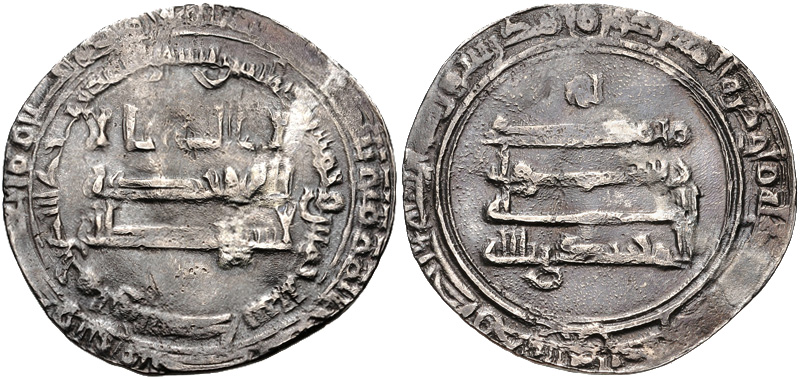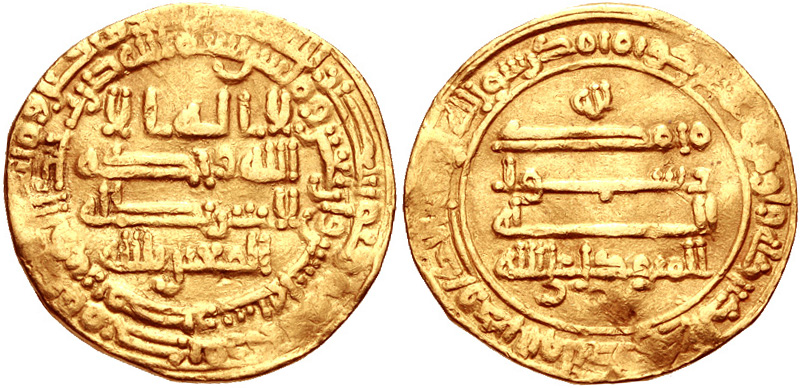|
Ashot I Of Armenia
Ashot I ( hy, Աշոտ Ա; c. 820 – 890) was an Armenian king who oversaw the beginning of Armenia's second golden age (862 – 977). He was the son of Smbat VIII the Confessor and was a member of the Bagratuni Dynasty. Life Early life Ashot was born around 820 to Smbat VIII Bagratuni and his wife Hripsime. Smbat VIII was '' sparapet'' (supreme commander) and the son of Ashot Msaker, the Prince of Armenia (r. 806–826). Ashot also had a brother named Abas. The family, the Bagratunis, was one of the most powerful in the kingdom, along with the Artsruni. Both families struggled for power through warfare against Arab invaders. The kingdom was later taken over by Armenians who overthrew the Arab government. Smbat VIII was exiled to Samarra, where he later died. Ashot continued to live in his father's quarters, located around the city of Bagaran. He was married to Katranide. Like Smbat before him, Ashot was named ''sparapet'' in 856 by the Abbasid Caliph al-Mutawakkil. Prince of ... [...More Info...] [...Related Items...] OR: [Wikipedia] [Google] [Baidu] |
King Of Armenia
This is a list of the monarchs of Armenia, for more information on ancient Armenia and Armenians, please see History of Armenia. For information on the medieval Armenian Kingdom in Cilicia, please see the separate page Armenian Kingdom of Cilicia. See List of kings of Urartu for kings of Urartu (Ararat), the predecessor state of Greater Armenia. Greater Armenia This is the historical designation of the largest and longest-lasting Armenian kingdom. Orontid kings and satraps In Armenian tradition Early kings in traditional Armenian chronology according to Moses of Chorene. ''Note that the early dates are traditional and of uncertain accuracy.'' *Orontes I Sakavakyats (570–560 BC) *Tigranes Orontid (560–535 BC) *Vahagn (530–515 BC) * Hidarnes I (late 6th century BC) * Hidarnes II (early 5th century BC) *Hidarnes III (middle of the 5th century BC) *Ardashir (2nd half of the 5th century BC) Attested satraps * Orontes (401–344 BC) * Darius Codomannus (344–336 BC) Yervan ... [...More Info...] [...Related Items...] OR: [Wikipedia] [Google] [Baidu] |
Arminiya
Arminiya, also known as the Ostikanate of Arminiya ( hy, Արմինիա ոստիկանություն, ''Arminia vostikanut'yun'') or the Emirate of Armenia ( ar, إمارة أرمينيا, ''imārat Arminiya''), was a political and geographic designation given by the Muslim Arabs to the lands of Greater Armenia, Caucasian Iberia, and Caucasian Albania, following their conquest of these regions in the 7th century. Though the caliphs initially permitted an Armenian prince to represent the province of ''Arminiya'' in exchange for tribute and the Armenians' loyalty during times of war, Caliph Abd al-Malik ibn Marwan introduced direct Arab rule of the region, headed by an ''ostikan'' with his capital in Dvin. According to the historian Stephen H. Rapp in the third edition of the ''Encyclopaedia of Islam'': History Early period: the Arab conquest of Armenia The details of the early conquest of Armenia by the Arabs are uncertain, as the various Arabic sources conflict with the Gr ... [...More Info...] [...Related Items...] OR: [Wikipedia] [Google] [Baidu] |
Mamikonian
Mamikonian or Mamikonean ( Classical hy, Մամիկոնեան; reformed orthography: Մամիկոնյան; Western Armenian pronunciation: ''Mamigonian'') was an aristocratic dynasty which dominated Armenian politics between the 4th and 8th century. They were the most notable noble house in Early Christian Armenia after the ruling Arsacid dynasty and held the hereditary positions of '' sparapet'' (supreme commander of the army) and ''dayeak'' (royal tutor), allowing them to play the role of kingmaker for the later Armenian kings. They ruled over extensive territories, including the Armenian regions of Tayk, Taron, Sasun, and Bagrevand, among others. The Mamikonians had a reputation as supporters of the Roman (later Byzantine) Empire in Armenia against Sasanian Iran, although they also served as viceroys under Persian rule. Their influence over Armenian affairs began to decline at the end of the 6th century and suffered a final, decisive blow after a failed rebellion against ... [...More Info...] [...Related Items...] OR: [Wikipedia] [Google] [Baidu] |
Bagrevand
Bagrevand (also spelled Bagrewand) was a region of Armenia. The Old Iranian etymology of the name is disputed. It is either derived from ''*bāγa.raivanta'' ("rhubarb garden") or ''baga-raēvanta-'', which either means "the rich giver" (Mithra) or "the bounteous God" (Ahura Mazda). History It was ruled first by Mamikonians and then, in IX-XI centuries, by the Bagratuni familyDictionary of toponymies of Armenia and adjacent regions, vol. 1, Yerevan, 1986, p. 536. In Armenian: Հայաստանի և հարակից շրջանների տեղանունների բառարան, հ.1, էջ 536: Bagrevand ... in the 9th-11th centuries was under the rule of the Bagratouni Kingdom of Armenia. Բագրևանդը … 9-11-րդ դարերում մտնում էր Բագրատունիների թագավորության տիրապետության մեջ:,. It also had its own diocese, whose bishops probably included the theologian Yeznik of Kolb. See also * List of regions of old Armenia ... [...More Info...] [...Related Items...] OR: [Wikipedia] [Google] [Baidu] |
Al-Mu'tamid
Abu’l-ʿAbbās Aḥmad ibn Jaʿfar ( ar, أبو العباس أحمد بن جعفر; – 14 October 892), better known by his regnal name Al-Muʿtamid ʿalā ’llāh (, "Dependent on God"), was the Caliph of the Abbasid Caliphate from 870 to 892. His reign marks the end of the "Anarchy at Samarra" and the start of the Abbasid restoration, but he was largely a ruler in name only. Power was held by his brother al-Muwaffaq, who held the loyalty of the military. Al-Mu'tamid's authority was circumscribed further after a failed attempt to flee to the domains controlled by Ahmad ibn Tulun in late 882, and he was placed under house arrest by his brother. In 891, when al-Muwaffaq died, loyalists attempted to restore power to the Caliph, but were quickly overcome by al-Muwaffaq's son al-Mu'tadid, who assumed his father's powers. When al-Mu'tamid died in 892, al-Mu'tadid succeeded him as caliph. Life The future al-Mu'tamid was a son of Caliph al-Mutawakkil () and a Kufan slave girl ca ... [...More Info...] [...Related Items...] OR: [Wikipedia] [Google] [Baidu] |
Al-Muhtadi
Abū Isḥāq Muḥammad ibn al-Wāthiq ( ar, أبو إسحاق محمد بن هارون الواثق; – 21 June 870), better known by his regnal name Al-Muhtadī bi-'llāh (Arabic: , "Guided by God"), was the Caliph of the Abbasid Caliphate from July 869 to June 870, during the "Anarchy at Samarra". Early life Al-Muhtadi was the son of Abbasid caliph al-Wathiq. He was born in 833. Al-Muhtadi's mother was Qurb, a Greek slave. After the death of his father, Caliph al-Wathiq () in August 847, there were some officials who wanted to elect the young al-Muhtadi as caliph, but in the end, their choice fell on his uncle, al-Mutawakkil (). Background Despite the successes of caliph al-Mu'tazz, He could not overcome the main problem of the period: a shortage of revenue with which to pay the troops. The financial straits of the Caliphate had become evident already at his accession—the customary accession donative of ten months' pay for the troops had to be reduced to two for lack ... [...More Info...] [...Related Items...] OR: [Wikipedia] [Google] [Baidu] |
Al-Mu'tazz
Abū ʿAbd Allāh Muḥammad ibn Jaʿfar ( ar, أبو عبد الله محمد بن جعفر; 847 – 16 July 869), better known by his regnal title al-Muʿtazz bi-ʾllāh (, "He who is strengthened by God") was the Abbasid caliph from 866 to 869, during a period of extreme internal instability within the Abbasid Caliphate, known as the "Anarchy at Samarra". Originally named as the second in line of three heirs of his father al-Mutawakkil, al-Mu'tazz was forced to renounce his rights after the accession of his brother al-Muntasir, and was thrown in prison as a dangerous rival during the reign of his cousin al-Musta'in. He was released and raised to the caliphate in January 866, during the civil war between al-Musta'in and the Turkish military of Samarra. Al-Mu'tazz was capable and determined to reassert the authority of the caliph over the Turkish military, but had only limited success. Aided by the vizier Ahmad ibn Isra'il, he managed to remove and kill the leading Turkish genera ... [...More Info...] [...Related Items...] OR: [Wikipedia] [Google] [Baidu] |
Emir
Emir (; ar, أمير ' ), sometimes transliterated amir, amier, or ameer, is a word of Arabic origin that can refer to a male monarch, aristocrat, holder of high-ranking military or political office, or other person possessing actual or ceremonial authority. The title has a long history of use in the Arab World, East Africa, West Africa, Central Asia, and the Indian subcontinent. In the modern era, when used as a formal monarchical title, it is roughly synonymous with "prince", applicable both to a son of a hereditary monarch, and to a reigning monarch of a sovereign principality, namely an emirate. The feminine form is emira ( '), a cognate for "princess". Prior to its use as a monarchical title, the term "emir" was historically used to denote a "commander", "general", or "leader" (for example, Amir al-Mu'min). In contemporary usage, "emir" is also sometimes used as either an honorary or formal title for the head of an Islamic, or Arab (regardless of religion) organisation ... [...More Info...] [...Related Items...] OR: [Wikipedia] [Google] [Baidu] |
Al-Musta'in
Abū al-ʿAbbās Aḥmad ibn Muḥammad ibn Muḥammad ( ar, أبو العباس أحمد بن محمد بن محمد; 836 – 17 October 866), better known by his regnal title Al-Mustaʿīn (836 – 17 October 866) was the Abbasid caliph from 862 to 866, during the "Anarchy at Samarra". After the death of previous Caliph, Al-Muntasir (who had not appointed any successors), the Turkic military leaders held a council to select his successor. They were not willing to have Al-Mu'tazz or his brothers; so they elected ''Ahmad ibn Muhammad'' (), a nephew of Al-Mutawakkil, who took the regnal name Al-Mustaʿīn bi-ʾllāh ( "he who looks for help to God"). Arab and other troops based in Baghdad, displeased at the choice, attacked the assembly, broke open the prison, and plundered the armory. They were attacked by the Turkic and Berber soldiers, and after some fighting in which many died, succumbed. Baghdad had yet to learn that the Caliphate no longer depended on the opinions of the Ar ... [...More Info...] [...Related Items...] OR: [Wikipedia] [Google] [Baidu] |
Al-Mutawakkil
Abū al-Faḍl Jaʿfar ibn Muḥammad al-Muʿtaṣim bi-ʾllāh ( ar, جعفر بن محمد المعتصم بالله; March 822 – 11 December 861), better known by his regnal name Al-Mutawakkil ʿalā Allāh (, "He who relies on God") was the tenth Abbasid caliph. He succeeded his brother, al-Wathiq, and is known for expanding the empire to its maximum extent. He was deeply religious, and is remembered for discarding the Muʿtazila, ending the Mihna (a period of persecution of Islamic scholars), and releasing Ahmad ibn Hanbal. He is also known for his tough rule, especially with respect to non-Muslim subjects. He was assassinated on 11 December 861 by the Turkic guard with the support of his son, al-Muntasir, marking the beginning of the period of civil strife known as the "Anarchy at Samarra". Early life Al-Mutawakkil was born on February/March 822 to the Abbasid prince Abu Ishaq Muhammad (the future al-Mu'tasim) and a slave concubine from Khwarazm called Shuja. His ... [...More Info...] [...Related Items...] OR: [Wikipedia] [Google] [Baidu] |

.png)




.jpg)

